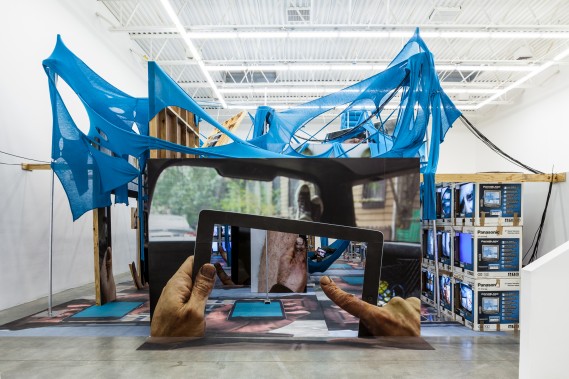Social Networks
Every few weeks we post tips straight from the Professional Development Program’s Artist’s Tools Handbook, a 200+ page resource we give to Core Workshop attendees, written by PDP Core Leaders Jackie Battenfield and Aaron Landsman. The book covers everything from writing to budgeting, websites to fundraising, elevator pitches to work samples. Similarly, each post is packed with practical ideas to make your life run more smoothly, leaving you even more time for your creative practice.

Jon Kessler , “The Web,” 2013
Social networks have revolutionized the way people use the Internet. These online platforms for community engagement have impacted politics, culture and journalism. And they have done so quickly and completely through their potential for viral reach (if you tell two friends and they tell two friends, the effect multiplies exponentially). When you join a social network, you are participating in a multiparty conversation. This can be both liberating and confusing; staying on top your social networking presence can take a lot of time.
- Frequency. Post frequently enough that people remember you but don’t post constantly. Refrain from sharing everything that pops into your head; share only what you really feel would benefit others.
- Subject. Balance your posts. Be participatory, not simply self-promotional. Make sure to acknowledge others’ successes.
- Clean-up. Delete your blog or Facebook page when it’s no longer in use. Don’t let it sit there growing obsolete, and don’t keep dead links. This will help those searching for you get to your most current and relevant work.
- Intent. Despite your intent, professional or personal, social networks have the ability or the tendency to blur the lines. If your goal is to advance your artistic career, be mindful of the personal information you share online. Don’t share anything you wouldn’t want other art world professionals to see.
